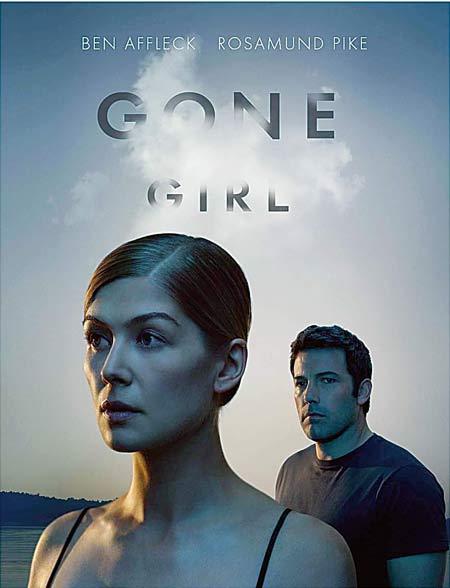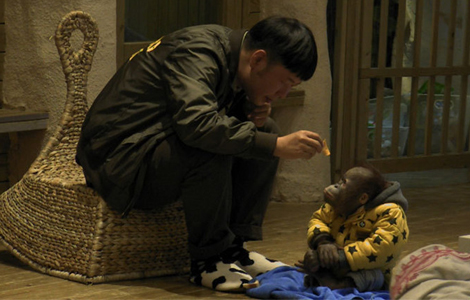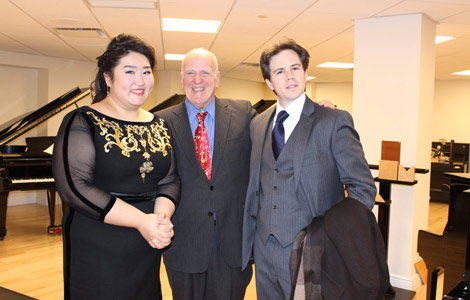Blurring the line between fact and fiction
Updated: 2015-01-25 14:17
By Raymond Zhou(Shanghai Star)
|
|||||||||
 |
|
Provided to Shanghai Star |
Two recent movies deal with the manipulation of public opinion. The first is Gone With the Bullets, a hyperactive retelling of a 1920 murder in Shanghai. Unlike the true story it's based on, the protagonist in the film did not set out to kill a beauty pageant winner, but in his opium-addled state, overturned the vehicle he was driving, which caused her death. While he was on the run, the press and the showbiz industry painted him as a total villain, making up lurid details about the way he killed her. By the time he was caught, nobody cared about the truth. The truth, if it came out, would have upset the public.
Gone Girl, a Hollywood film, portrays a subtler tale of an erstwhile happily married couple and how they each navigate the media. We notice how an innocuous smile turns into the smoking gun when it is enlarged by traditional and new media. Again, people don't care about the truth, but just their version of the truth, which conforms to the rules of melodrama.
We live in a world where loose ends cannot be tied up and individual strands of reality often contradict each other. But we try to make sense of the chaos. Sometimes we try too hard that we bend the truth to fit our own imagination.
The Internet is full of such citizen journalists, who, out of the best possible intentions, make up rumors and distribute them. A few years ago, a reader who barely understood English noticed the word "banana" in a China Daily story. He made up the rest of the story, saying bananas have been found by scientists to be harmful to human health. Stories of alarm travel fast and, by the time it was cleared up, some banana farmers in Hainan province had lost their life savings. That person might have had the purest motives, but he did not know a thing about journalism.
Unfortunately, even trained journalists may commit the same faux pas. On January 11, a young woman in Nanjing jumped into a river. A man dived in to rescue her. A passerby caught the moment on her cell phone after a crowd gathered around the woman, who was naked, and before additional policemen arrived to pull the man out of the water. That photo showed the good Samaritan alone in cold water, which was true for those few seconds.
Coincidentally, another man saved his female colleague from drowning the next day in another province. That man griped about the lack of gratitude from the one he saved. A reporter from a Guangzhou based newspaper patched the two stories together, using words from the second story to illustrate the photo from the first one, which fits perfectly on first sight.
People like that are in the wrong profession. They should get into creative writing, which could be far more lucrative than journalism.

 Drama with a twist
Drama with a twist
 Auctions of official vehicles starts in Beijing
Auctions of official vehicles starts in Beijing
 Icy challenge in freezing temperatures
Icy challenge in freezing temperatures
 Chinese stars join new reality show 'Wonderful Friends'
Chinese stars join new reality show 'Wonderful Friends'
 Plum blossom seen in E China's Hangzhou
Plum blossom seen in E China's Hangzhou
 Wireless charging desk unveiled in Hangzhou
Wireless charging desk unveiled in Hangzhou
 Music at her fingers
Music at her fingers
 View from the top of Shanghai's tallest tower
View from the top of Shanghai's tallest tower
Most Viewed
Editor's Picks

|

|

|

|

|

|
Today's Top News
Favorable visa policy to draw talent
China's signal of innovation in Davos
China's coal industry freezes over
China further lowers threshold to attract overseas talent
China disqualifies 300 intangible cultural heritage programs
China restricts government office sizes
Vancouver Boat Show attracts wealthy Chinese buyers
Third panda dies from virus in China
US Weekly

|

|








